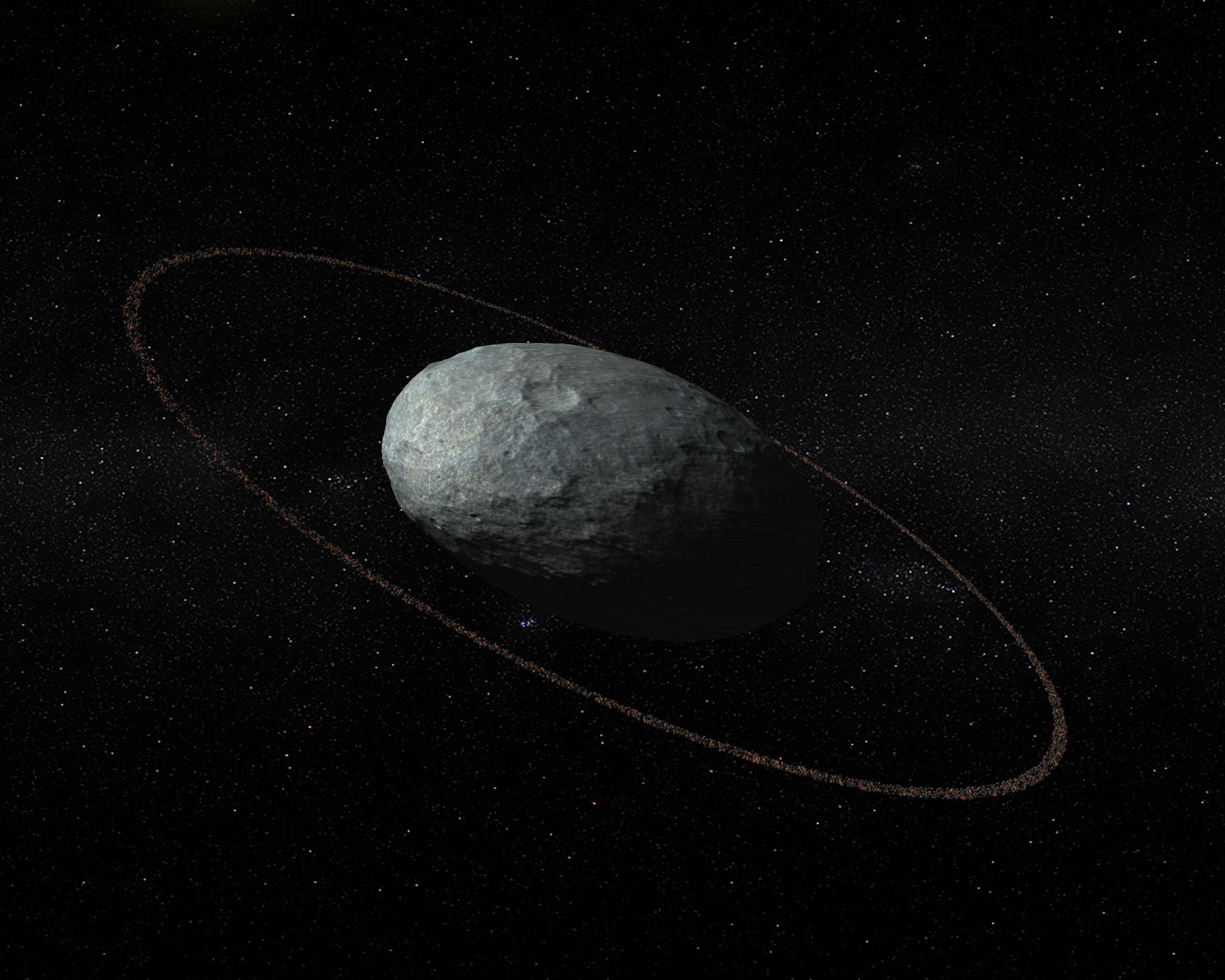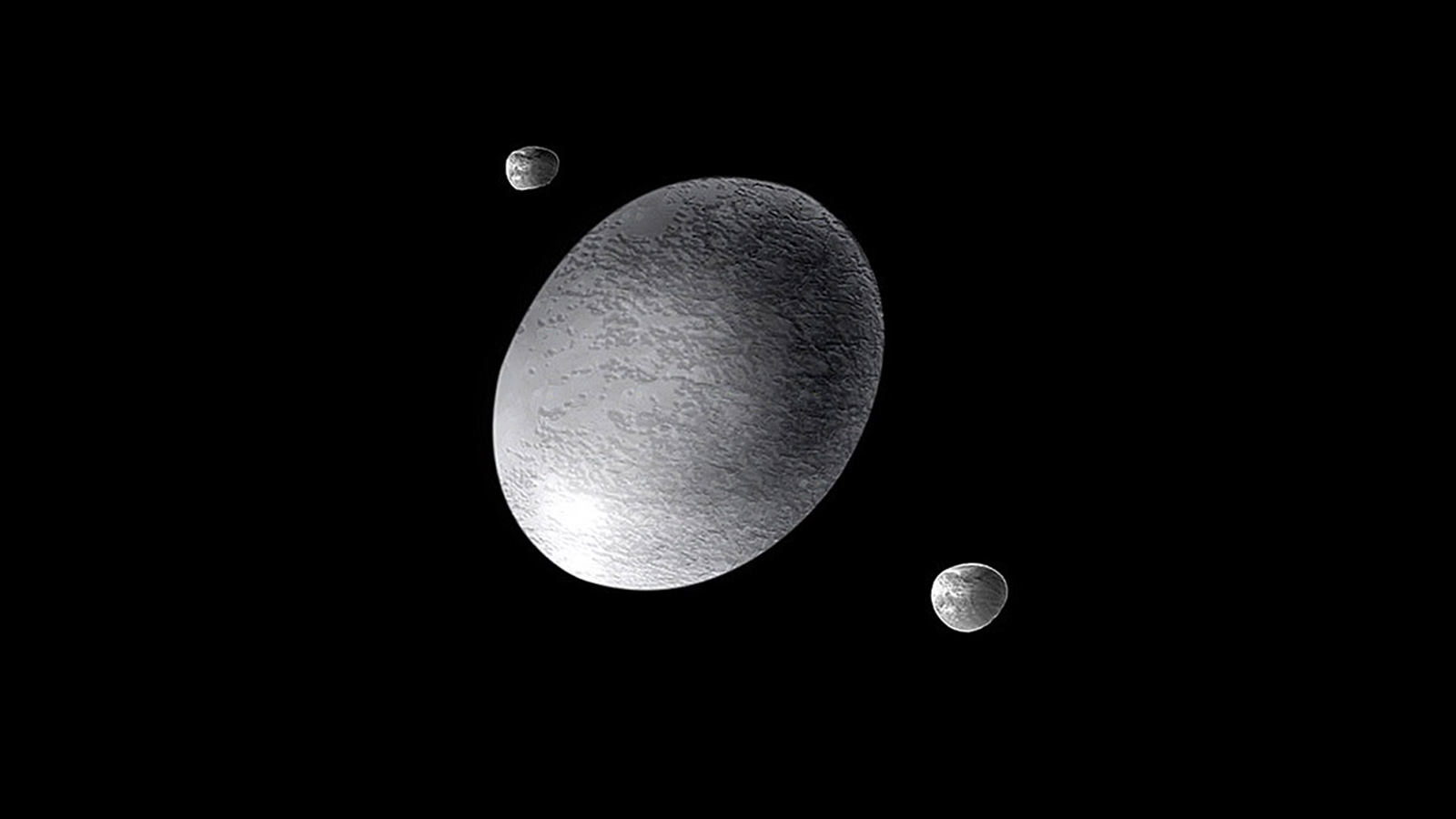Institute of Astrophysics of Andalusia - Superior Council of Scientific Investigations (IAA-CSIC) | 2017 Oct 11
The trans-neptunian belt contains four dwarf planets, among which Haumea stands out for its extremely elongated shape and rapid rotation. A stellar occultation makes it possible to establish main physical characteristics of heretofore this little known body – among which most surprising was presence of a ring
At the ends of the Solar System, beyond the orbit of Neptune, there is a belt of objects composed of ice and rocks, among which four dwarf planets stand out: Pluto, Eris, Makemake and Haumea. The latter is the least well known of the four and was recently the object of an international observation campaign which was able to establish its main physical characteristics. The study, led by astronomers from the Institute of Astrophysics of Andalusia and published in Nature, reveals the presence of a ring around the planet.
Trans-neptunian objects are difficult to study because of their small size, their low brightness, and the enormous distances that separate us from them. A very efficient but complex method lies in the study of stellar occultations, or the passing of these objects in front of a star (like a small eclipse). It allows astronomers to determine the main physical characteristics of an object (size, shape, and density) and has been successfully applied to dwarf planets Pluto, Eris and Makemake.
"We predicted that Haumea would pass in front of a star on the 21st of January 2017, and twelve telescopes from ten different European observatories converged on the phenomenon,” says José Luis Ortiz, researcher at the Institute of Astrophysics of Andalusia (IAA-CSIC) in charge of the study. “This deployment of technical means allowed us to reconstruct with a very high precision the shape and size of dwarf planet Haumea, and discover to our surprise that it is considerably bigger and less reflecting than was previously believed. It is also much less dense than previously thought, which answered questions that had been pending about the object."
Haumea is an interesting object: it rotates around the Sun in an elliptic orbit which takes it 284 years to complete (it presently lies fifty times further from the Sun than the Earth), and it takes 3.9 hours to rotate around its axis, much less than any other body measuring more than a hundred kilometers long in the entire Solar System. This rotational speed causes it to flatten out, giving it an ellipsoid shape similar to a rugby ball. The recently published data reveal that Haumea measures 2.320 kilometers in its largest axis – almost the same as Pluto – but lacks the global atmosphere that Pluto has. ...
The size, shape, density and ring of the dwarf planet Haumea from a stellar occultation - J. L. Ortiz et al
- Nature 550(7675):197 (12 Oct 2017) DOI: 10.1038/nature24051


